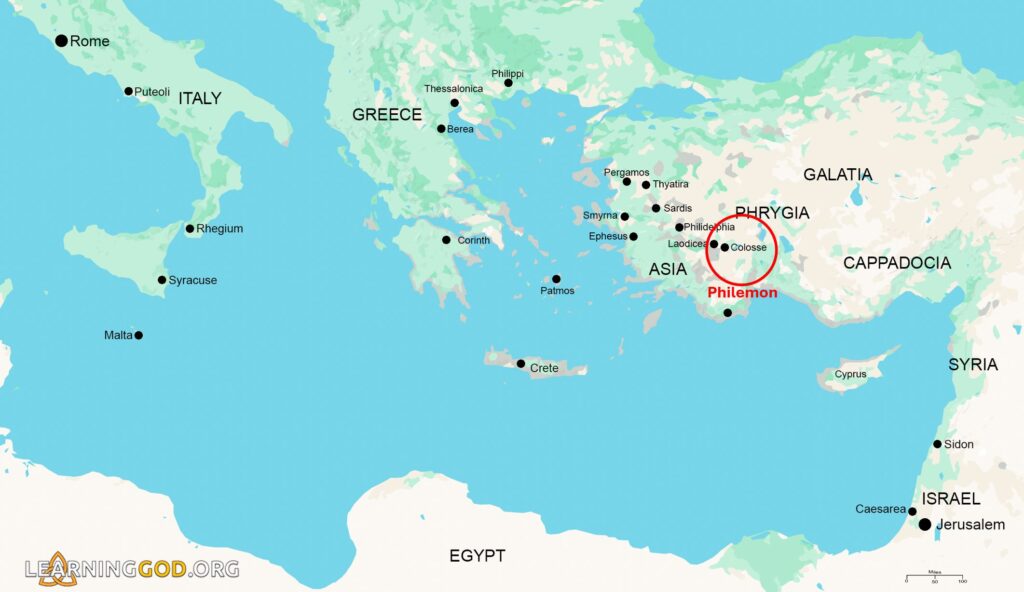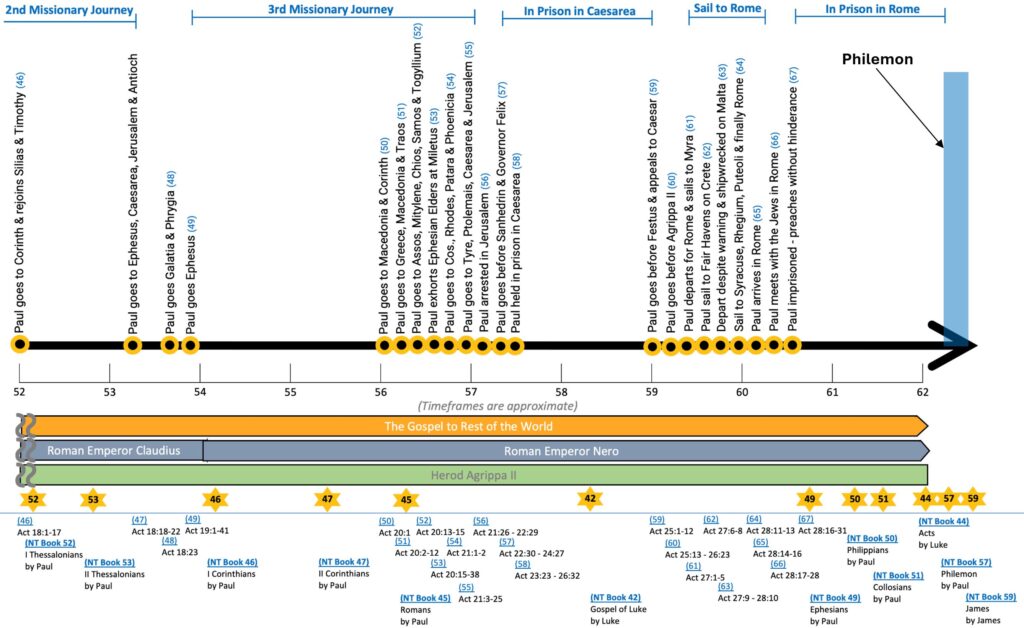Philemon
Forgiving Others
Summary | About | Why You Should Read it | Author | When Written | Context | Timeline | Location | Outline | Observations | Resources
Summary
This very short 25 verse book is Paul’s treatise on the forgiveness of others. It deals with a slave who has transgressed against his owner and run away, which is a crime punishable by death. The slave, Onesimus, has repented and Paul is now asking the slave owner, Philemon, to whom the letter is addressed, to not only forgive him, but to treat him as a brother and not a slave!
The table below is a high-level look at the structure and contents of Philemon.

About
Philemon is the 18th book of the New Testament and the 13th book authored by Paul (in biblical order, not chronological order).

Why You Should Read It
This book provides us a biblical understanding of forgiveness of the sins of others. It demonstrates what Jesus expects of us in terms of how we treat others who have wronged us. Jesus has forgiven us of our sins against Him and He expects us to do the same for others!
Author
Philemon is the 18th book of the New Testament and the 13th book authored by Paul (in biblical order, not chronological order).
When Written
The letter was most likely written around A.D. 62 about the same time as his letter to the Colossians. See the Timeline below for more details on the surrounding events.
Context
Paul wrote this letter to Philemon, a believer in Colosse who, along with others, was a slave owner (cf. Col 4:1). One of his slaves, Onesimus, had apparently stolen from him (cf. v. 18) and then run away, which under Roman law was punishable by death. But Onesimus met Paul and through his ministry became a Christian (see v. 10). Now he was willing to return to his master, and Paul writes this personal appeal to ask that he be accepted as a Christian brother (see v. 16).
Timeline
The general order of events from the New Testament period of the early 60s to the early 100s is shown below. This letter was written in this timeframe.
Location
Paul wrote this short letter most likely from his imprisonment in Rome and it was sent to Colosse as shown on the map below.

Outline
Greetings (1:1) — (1:3)
Thanksgiving and Prayer (1:4) — (1:7)
Paul’s Plea for Onesimus (1:8) — (1:21)
Final Request, Greetings and Benediction (1:22) — (1:25)
Observations
- The Book of Philemon:
- Is one of the four prison epistles of Paul.
- Ephesians
- Philippians
- Colossians
- Philemon
- Is Paul’s only one chapter book.
- Is Paul’s shortest book. (334 words in Greek, and 445 in the KJV)
- Is one of Paul’s four books addressed to individuals.
- 1 Timothy
- Titus
- 2 Timothy
- Philemon
- Philemon was:
- A resident of Colosse. 1-2
- One of Paul’s converts to Christ. 19
- Had a house large enough for the church to meet in. 2
- A benevolent man. 5-7
- Father of Archipus. 2
- Was the owner of the slave, Onesimus.
- According to Roman law, a runaway slave could be severely punished, and even put to death.
- Concerning Onesimus:
- He was a slave who had runaway from his master.
- It is possible that he had stolen money from Philemon.
- He fled to Rome.
- He was converted to Christ by Paul.
- Paul writes the letter to Philemon and asks him to take Philemon back as a beloved brother.
- The letter was delivered to Philemon by:
- Tychicus
- Philemon
- Is one of the four prison epistles of Paul.
Sections in Philemon
- Greetings 1-3
- Paul’s commendation 4-7
- Paul’s request 8-17
- Paul’s promise 18-21
Theme
- Forgiving and accepting one another as brothers and sisters in Christ
Jesus in Philemon
- Jesus is the Master, in whom believers are brothers and sisters in Christ (1:9, 15-16).

